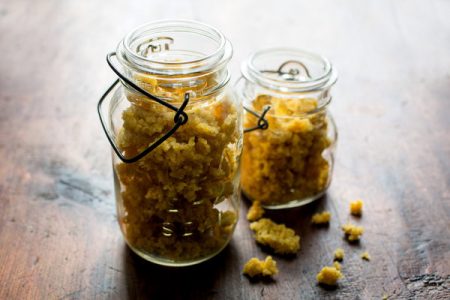A vegetarian recommendation should probably be a lot more accessible than a traditional dish from the mountains of Western Crete could ever hope to be. But when I cam across this dish from my friend Diana Farr Louis’ wonderful book Feasting and Fasting in Crete, I suddenly craved a warming bowl of this timeless food.
Trahana, known in Crete as xinohondros, is one of the eastern Mediterranean’s most ancient and delicious foods. It is a hard, sun-dried grain product made by combining cracked wheat, bulgur, or flour with buttermilk or yogurt (which makes the “sour” kind), or with whole milk (to make the “sweet” kind). There are many versions of this product around Greece and in Cyprus. In Lesvos, for example, trahana is called koupes, which means cups, because of the way it is shaped.
A dense mass is made with the above ingredients, cooked and broken into large chunks, which are left to dry in the sun. Trahana and/or xinohondros is almost always made at the end of August, when it is warm and windy enough to dry it out quickly. In most parts of Greece, the chunks are passed through a fine-mesh metal sieve and broken up that way into tiny granules, not unlike bulgur.
In Greece trahana and xinohondro are traditionally used in soups, sometimes as filler, the way you’d add a little rice or pastina, and sometimes as the main ingredient, which turns into a delicious, dense porridge at once earthy, very craveable, and imbued, at least to this palate, with “umami”—that hit-the-spot quality that is beyond description.
You can find trahana in Greek shops and there are plenty all over the country. Basically, if there’s a Greek church in your area, chances are there is a Greek deli or grocery store not too far away.






